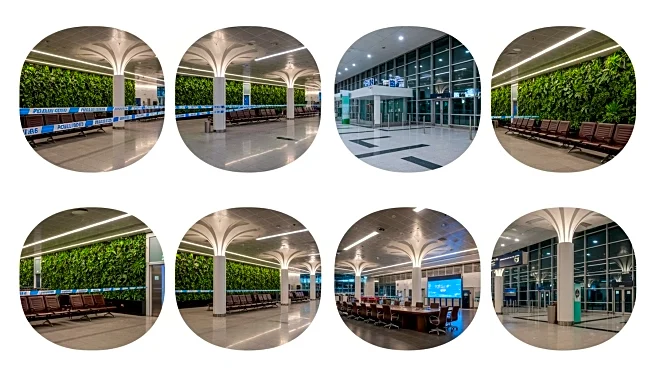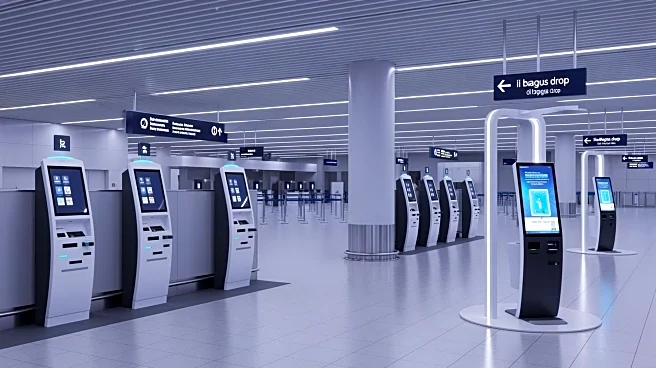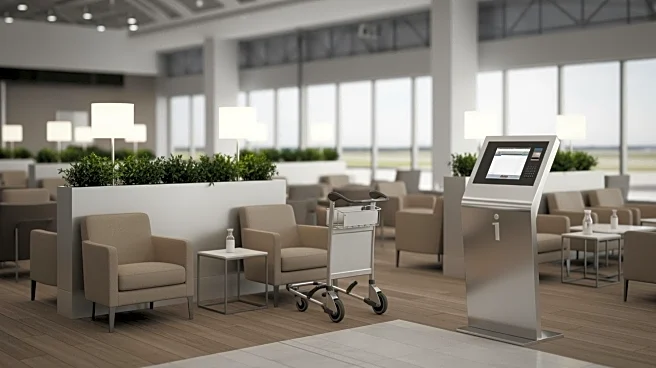What's Happening?
Delhi's Indira Gandhi International Airport (IGIA) has reopened its Terminal 2 (T2) after extensive renovations. The terminal, inaugurated by Civil Aviation Minister K Rammohan Naidu, now features a self-baggage
drop system, six new passenger boarding bridges, and an advanced display system for real-time flight updates. The upgraded terminal can handle 15 million passengers annually, contributing to IGIA's total capacity of over 100 million passengers per year. Starting Sunday, around 120 daily domestic flights operated by Air India and IndiGo will commence from T2. The renovations aim to enhance passenger experience with reduced wait times and improved safety features.
Why It's Important?
The reopening of Terminal 2 at IGIA is significant for India's aviation sector, as it increases the airport's capacity to handle more passengers, thereby supporting the growing demand for air travel in the region. The introduction of modern facilities like self-baggage drop systems and advanced boarding bridges is expected to streamline operations and improve passenger satisfaction. This development is crucial for maintaining IGIA's status as a major aviation hub in India and can potentially boost economic activities related to travel and tourism. Airlines operating from the terminal, such as Air India and IndiGo, stand to benefit from the increased efficiency and capacity.
What's Next?
As operations resume at Terminal 2, airlines and passengers will need to adapt to the new systems and facilities. Air India and IndiGo have already announced changes to their flight operations, with specific series of flights being reassigned to T2. Passengers are advised to check their flight and terminal details before traveling. The airport authorities will likely monitor the transition closely to ensure a smooth experience for travelers and address any operational challenges that may arise.











